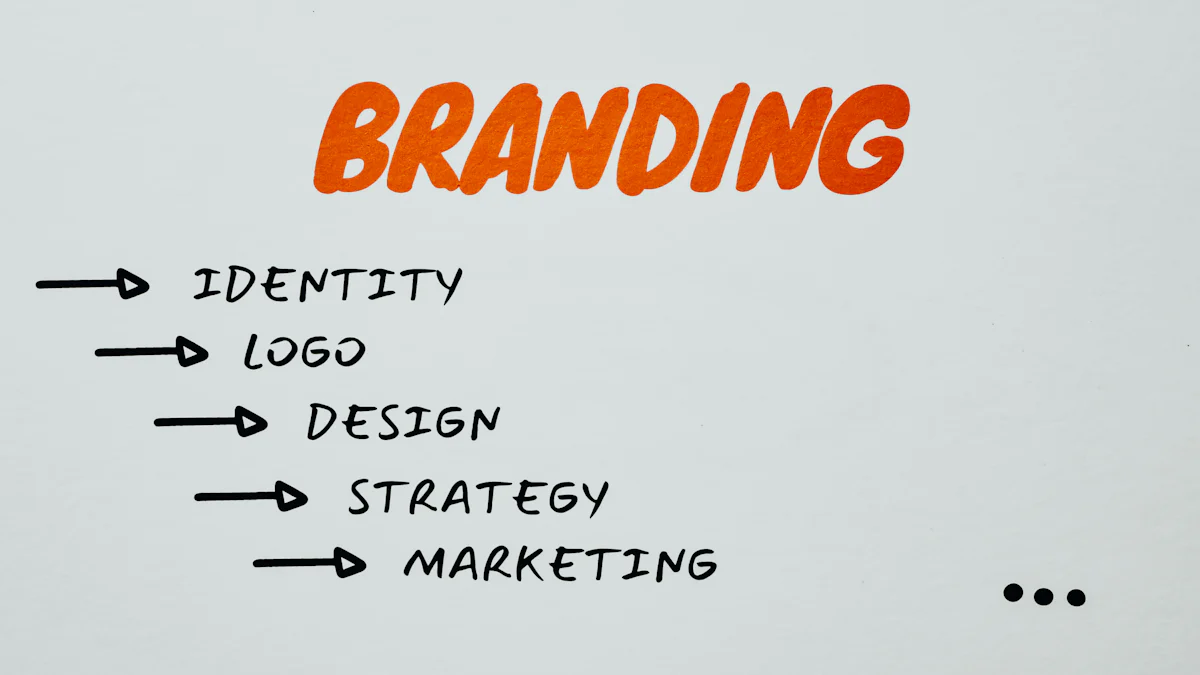How Content Marketing Builds Trust and Engages Audiences in 2025

Trust and engagement are the backbone of successful content marketing in 2025. You know how important it is to connect with your audience on a deeper level. A recent Edelman survey revealed that 70% of people value transparency more than ever. This shift means your brand must focus on authenticity and openness to build lasting relationships.
"Building trust with your customers is one of the most important things you can do for your business. In addition to potentially boosting revenue, trust can be a great barometer of growth."
AI-driven personalization is also transforming how you engage with your audience. By tailoring content to individual preferences, you can create emotional connections that resonate. With a strong caliber brand strategy + content marketing approach, you’ll stand out as a trusted leader in your industry.
Building Trust Through Caliber Brand Strategy + Content Marketing

The Role of Authenticity in Establishing Trust
Authenticity is the foundation of trust. Your audience can tell when your content feels forced or overly promotional. Instead, focus on being genuine. Share stories that reflect your brand’s values and mission. For example, showcasing customer testimonials or behind-the-scenes glimpses of your team can make your business feel more relatable. When you empower your audience with educational content, they’ll see you as a helpful resource rather than just another company trying to sell something.
Thought leadership is another way to build credibility. By publishing articles that demonstrate your expertise, you show your audience that you truly understand their needs. This approach not only builds trust but also positions your brand as an authority in your industry. When your content feels real and valuable, your audience will keep coming back for more.
Transparency as a Key to Long-Term Relationships
Being transparent isn’t just a nice-to-have—it’s a must in today’s digital world. People want to know who they’re buying from and what your brand stands for. Companies like Patagonia and Zappos have mastered this. Patagonia’s commitment to sustainability and Zappos’ clear return policies have earned them loyal customers who appreciate their openness.
You can follow their lead by being upfront about your processes, pricing, and even mistakes. If something goes wrong, own up to it and explain how you’re fixing it. This honesty shows your audience that you value their trust. Over time, this level of transparency fosters deeper connections and keeps customers coming back.
Consistency in Messaging and Branding
Consistency is key to building a recognizable and trustworthy brand. When your messaging aligns across all platforms, your audience knows what to expect. This familiarity creates a sense of reliability. For instance, consistent branding can increase revenue by up to 23%, proving that trust directly impacts your bottom line.
To achieve this, make sure your tone, visuals, and values remain the same across every channel. Whether it’s your website, social media, or email campaigns, your audience should feel like they’re interacting with the same brand. Listening to feedback can also help you refine your messaging. When you deliver on your promises consistently, your audience will see you as dependable and professional.
Personalized Content for Enhanced Audience Engagement

Leveraging AI and Data Analytics for Personalization
Personalization has become a game-changer in content marketing. Thanks to advancements in AI and data analytics, you can now deliver content that feels tailor-made for each individual. Predictive personalization, for instance, uses AI to anticipate what your audience needs based on their past behavior. This means you can offer solutions before they even ask for them.
Hyper-personalization takes it a step further by using real-time data to create highly customized experiences. Imagine sending a newsletter where every reader sees content that matches their preferences. Tools like Bloomreach Engagement make this possible by ensuring the right message reaches the right person at the perfect time.
When you personalize content, you’re not just improving engagement—you’re also boosting conversions. Studies show that delivering relevant information enhances customer experience and generates more qualified leads. It’s a win-win for both you and your audience.
Multi-Channel Strategies to Maximize Reach
Your audience isn’t confined to one platform, so your content shouldn’t be either. A strong multi-channel strategy ensures you connect with people wherever they are. Start by understanding where your audience spends their time. Then, choose 3-5 platforms that align with their habits.
Consistency is key. Your messaging should feel cohesive across all channels, whether it’s a blog post, social media update, or email campaign. At the same time, adapt your content to fit each platform’s strengths. For example, use short, engaging videos on Instagram and detailed articles on LinkedIn.
Don’t forget to track your performance. Use analytics tools to monitor engagement and adjust your strategy based on what works. This approach keeps your content fresh and ensures you’re always meeting your audience’s needs.
SEO and Tailored Messaging for Audience Connection
SEO isn’t just about ranking higher on search engines—it’s about understanding your audience. By researching their pain points and desires, you can create messages that truly resonate. Use storytelling to evoke emotions and connect on a deeper level.
Keywords play a big role here. When you know the specific words your audience uses, you can align your content with their intent. A well-executed keyword strategy ensures your content feels relevant and helpful. Don’t forget to structure your content for readability and include calls to action that encourage engagement.
Tailored messaging, combined with SEO, helps you build trust and foster long-term relationships. It’s not just about being found—it’s about being remembered.
Caliber Brand Strategy + Content Marketing for Differentiation
Crafting a Unique Brand Voice
Your brand voice is what makes you stand out in a crowded market. It’s how your audience recognizes and connects with you. To craft a voice that’s truly unique, start by defining your company’s values and mission. What do you stand for? What message do you want to share with the world? Next, get to know your audience. Understanding their preferences and pain points helps you speak their language.
Take a look at your best-performing content. What’s resonating with your audience? Use those insights to refine your voice. Align your team with clear brand guidelines so everyone communicates consistently. Finally, measure the impact. Track metrics like engagement rates and comment sentiment to see how well your voice is working. Adjust as needed to keep it fresh and relevant.
| Metric | Description |
|---|---|
| Comment Sentiment | Analyzing how your audience feels about your content. |
| Engagement Rates | Measuring likes, shares, and comments to see how well your voice resonates. |
| Customer Feedback | Collecting direct input to understand audience reactions. |
| Brand Mentions | Tracking how often people talk about your brand to gauge awareness and engagement. |
Positioning as an Industry Leader
When you position yourself as a leader, you build trust and credibility. Focus on solving customer problems and highlighting what makes you different. For example, True Media emphasizes its unique strengths while addressing customer needs. This approach avoids generic claims and builds trust by showcasing specific benefits.
Adaptability is key. Stay ahead of market trends to show your audience you’re always evolving. Specific messaging also helps you own your space in the market. When you’re clear about what you offer, your audience knows exactly why they should choose you.
Staying Ahead with Emerging Trends and Technologies
The digital landscape is changing fast, and staying ahead is crucial. AI-driven content creation is a game-changer. It helps you create personalized, optimized content that speaks directly to your audience. Short-form videos on platforms like TikTok and Instagram Reels are dominating engagement strategies. These quick, engaging formats grab attention and keep people coming back.
Interactive content is another trend to watch. Augmented reality (AR) and virtual reality (VR) create immersive experiences that leave a lasting impression. Voice search is also on the rise. Optimizing for natural language and audio content ensures you’re ready for this shift. Finally, ethical marketing is more important than ever. Show your commitment to social causes to build trust and loyalty.
By embracing these trends, you’ll keep your content fresh and relevant. A strong caliber brand strategy + content marketing approach ensures you stay ahead of the competition.
Steps to Launch a Successful Content Marketing Strategy
Setting Clear Goals and KPIs
Every successful content marketing strategy starts with clear goals. Without them, you’re just throwing darts in the dark. So, how do you set goals that actually work?
- Understand your broader business goals. Your content strategy should align with what your company wants to achieve.
- Define specific objectives. For example, aim to increase leads by 20% or boost website traffic by 30%.
- Make your goals measurable. Use KPIs like pageviews, conversion rates, or social media engagement to track progress.
- Set timeframes. Deadlines create urgency and keep everyone accountable.
- Communicate goals with your team. When everyone’s on the same page, collaboration becomes seamless.
Avoid common mistakes like focusing too much on self-promotion or failing to adapt to digital trends. Clear, measurable goals keep your strategy focused and effective.
Creating a Comprehensive Content Calendar
A content calendar is your roadmap. It keeps your team organized and ensures you’re delivering the right content at the right time. Tools like Hootsuite make this process easier. You can schedule posts across platforms, adjust them with drag-and-drop features, and even get insights on the best times to post.
Batching your work is another game-changer. Dedicate specific time blocks to create multiple pieces of content. This approach boosts efficiency and encourages teamwork.
When building your calendar, think about your audience’s habits. Are they more active on social media during weekends? Do they prefer blog posts on weekdays? Tailor your schedule to match their behavior.
Measuring and Optimizing Content Performance
You can’t improve what you don’t measure. Tracking performance helps you understand what’s working and what’s not. Focus on metrics like:
- Pageviews: See which topics grab attention.
- Social media engagement: Track likes, shares, and comments to gauge interaction.
- Bounce rate: High rates might mean your content isn’t resonating.
- Conversion rate: Measure how many visitors take action, like signing up or purchasing.
- Content ROI: Compare revenue from content to the resources you’ve invested.
Tools like Google Analytics, SEMrush, and Ahrefs can simplify tracking. Use these insights to tweak your strategy and keep your content fresh and impactful.
Content marketing in 2025 isn’t just a strategy—it’s your key to building trust and keeping your audience engaged. By focusing on authenticity, you create genuine connections. Personalization helps you deliver exactly what your audience needs. Differentiation sets you apart in a crowded market.
A strategic approach brings long-term benefits:
- Builds brand authority and trust.
- Boosts SEO and ROI.
- Keeps your audience engaged consistently.
When you adapt to market changes and refine your content, you stay ahead. With the right strategy, you’ll create lasting connections and secure a competitive edge.
FAQ
What is the most important element of content marketing in 2025?
Authenticity is key. Your audience values genuine, relatable content that reflects your brand’s values. Focus on building trust by being transparent and consistent. When your content feels real, people connect with it on a deeper level.
Tip: Share behind-the-scenes stories or customer testimonials to showcase your authenticity.
How can small businesses compete with larger brands in content marketing?
Leverage personalization and niche expertise. Use AI tools to tailor content for your audience. Highlight your unique strengths and focus on solving specific problems. Small businesses can build stronger connections by being relatable and approachable.
Note: A well-defined brand voice can make you stand out, even in a crowded market.
What tools can help improve content marketing strategies?
Tools like Google Analytics, Hootsuite, and SEMrush are great for tracking performance and optimizing content. AI-driven platforms like Bloomreach Engagement can help with personalization. These tools simplify processes and provide valuable insights.
Emoji Tip: 🛠️ Use tools to save time and focus on creating impactful content!
How do you measure the success of a content marketing campaign?
Track metrics like pageviews, engagement rates, and conversion rates. Use tools to analyze data and identify what’s working. Adjust your strategy based on these insights to improve results.
| Metric | What It Measures |
|---|---|
| Pageviews | How many people view your content. |
| Conversion Rate | How many visitors take action (e.g., sign up, purchase). |
| Social Engagement | Likes, shares, and comments that show audience interaction. |
Why is multi-channel marketing important?
Your audience uses different platforms. A multi-channel strategy ensures you reach them wherever they are. Tailor your content to fit each platform while keeping your messaging consistent. This approach maximizes your reach and engagement.
Tip: Start with 3-5 platforms where your audience is most active.
See Also
Top 10 Tools for Finding Influencers in 2024
Understanding the Functionality of Free Influencer Tools
New Trends in AI Predictive Analytics for 2024
